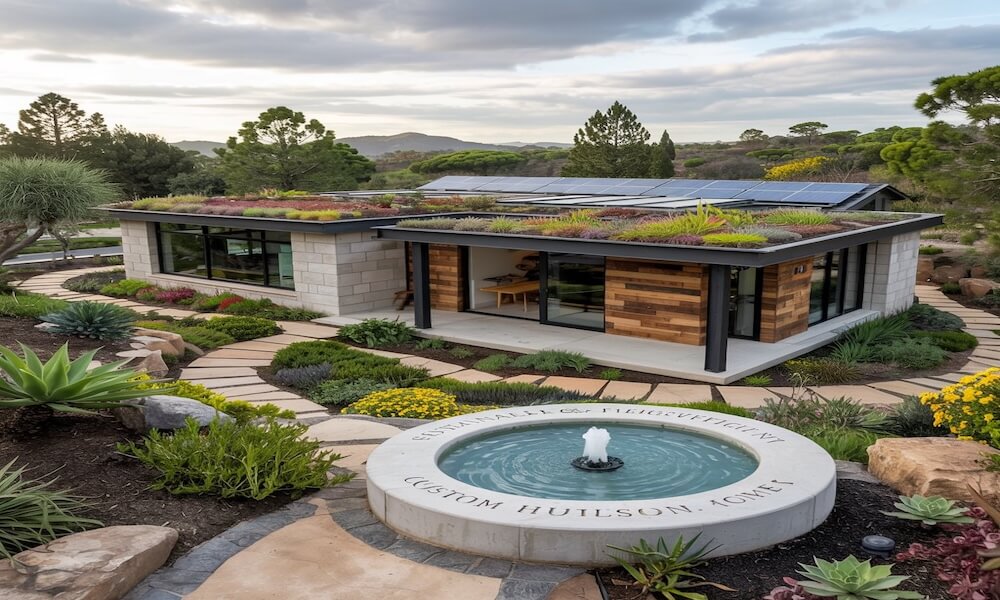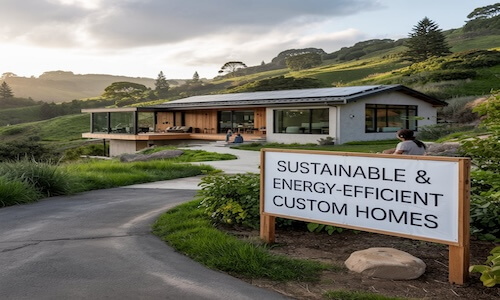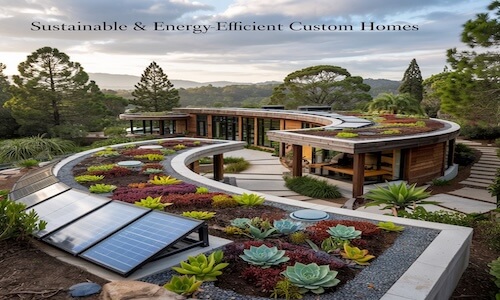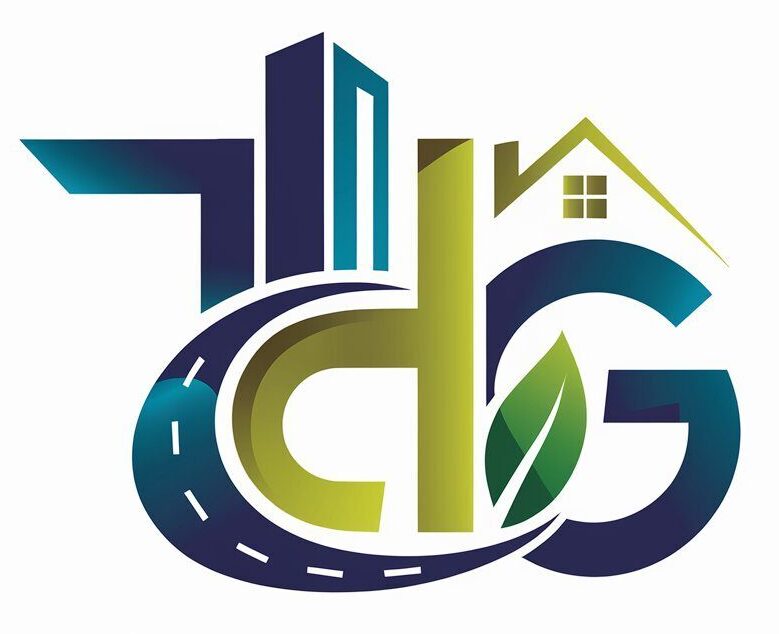Sustainable & Energy-Efficient Homes
Sustainable & Energy-Efficient Homes: Building for a Greener Future
As environmental concerns grow and energy prices fluctuate, more homeowners are turning to sustainable and energy-efficient design when building custom homes. These homes go beyond simple cost savings; they reduce your environmental footprint, improve indoor air quality, and often increase resale value. Best of all, thanks to innovations in materials and technology, energy-efficient building practices are more accessible and affordable than ever.
This guide will walk you through the key elements of building a sustainable, energy-efficient custom home—from design strategies to material choices and energy systems.

1. Smart Site Selection and Home Orientation
Energy efficiency starts before the foundation is even poured. The location of your custom home and how it’s positioned on your lot can have a significant impact on heating, cooling, and natural light.
Key Considerations:
- Passive solar design: Orienting your home to take advantage of the sun’s path can dramatically reduce heating and lighting costs.
- Natural shading: Use existing trees or strategic landscaping to block summer heat.
- Wind exposure: Position the home to protect from prevailing winds in winter and take advantage of breezes in summer.
2. High-Performance Building Envelope
The “envelope” includes walls, roof, windows, doors, and insulation. It’s the barrier between the indoors and outdoors—and one of the most critical components in maintaining energy efficiency.
Best Practices:
- Advanced insulation: Spray foam, rigid foam boards, and blown-in cellulose can drastically reduce heat loss.
- Air sealing: Seal gaps and cracks around windows, doors, and wiring to prevent drafts and moisture intrusion.
- Energy-efficient windows: Choose low-E (low emissivity), double- or triple-pane windows to reduce heat transfer and UV damage.
A well-insulated, airtight home not only saves energy but also improves comfort and indoor air quality.

3. Sustainable Building Materials
Choosing eco-friendly materials reduces the impact your home has on the planet and can also improve indoor air quality by avoiding toxins.
Popular Green Materials:
- Bamboo flooring: A fast-growing, renewable alternative to hardwood.
- Recycled steel: Strong and durable, with a lower carbon footprint than new metal.
- Reclaimed wood: Adds character while reducing the demand for new lumber.
- Low-VOC paints and finishes: VOCs (volatile organic compounds) can release harmful fumes; low-VOC products are safer for indoor use.
Also, source materials locally when possible to cut down on transportation emissions.
4. Energy-Efficient HVAC and Appliances
Heating and cooling account for a large percentage of household energy use. Upgrading to efficient systems can significantly reduce your bills—and emissions.
What to Look For:
- Heat pumps: These systems provide both heating and cooling and are among the most efficient HVAC options available.
- Programmable thermostats: Smart thermostats learn your habits and adjust temperatures automatically.
- ENERGY STAR appliances: From refrigerators to washers, these models use less energy and water without sacrificing performance.
- Whole-house ventilation systems: Especially important in airtight homes to maintain healthy airflow and indoor air quality.
5. Solar and Renewable Energy Systems
Incorporating renewable energy into your custom home can dramatically reduce or even eliminate your electric bills—and reduce reliance on fossil fuels.
Options to Consider:
- Solar panels: Roof- or ground-mounted systems generate clean electricity.
- Solar water heaters: Use the sun’s energy to provide hot water.
- Battery storage systems: Store excess solar energy for use during cloudy days or nighttime.
- Geothermal systems: Tap into the earth’s stable temperature to heat and cool your home efficiently.
In many regions, homeowners may qualify for tax credits, rebates, or other incentives to help offset installation costs.

6. Water Conservation and Management
Water efficiency is a key component of sustainable home design—especially in areas prone to drought or water scarcity.
Strategies:
- Low-flow fixtures: Faucets, showerheads, and toilets designed to use less water without sacrificing performance.
- Rainwater harvesting: Collect and reuse rainwater for irrigation or even indoor use with proper filtration.
- Drought-tolerant landscaping: Native plants and xeriscaping require minimal watering and upkeep.
- Greywater systems: Reuse water from sinks and showers for irrigation purposes.
These systems not only save water but also reduce strain on municipal water supplies.
7. Smart Home Technology
Modern smart home features not only offer convenience but also contribute to energy savings by optimizing your home’s performance.
Useful Smart Systems:
- Lighting: Smart bulbs and switches that turn off automatically or adjust brightness based on natural light.
- Thermostats: As mentioned earlier, smart thermostats fine-tune heating and cooling.
- Energy monitoring: Devices that track usage by appliance or room help you identify areas for improvement.
- Shades and blinds: Automated window coverings can open or close based on temperature, light, or schedule.
Connected systems can be controlled from your phone or voice assistant, allowing you to monitor and adjust your home’s efficiency anytime.

8. Durability and Long-Term Thinking
A truly sustainable home isn’t just efficient—it’s built to last. Choosing durable, low-maintenance materials reduces waste and repair costs over time.
Smart Long-Term Choices:
- Metal roofing: Lasts 50+ years and is fully recyclable.
- Fiber cement siding: Resistant to fire, pests, and rot.
- Composite decking: Made from recycled plastics and wood fibers, highly weather-resistant.
- Concrete or tile floors: Long-lasting and easy to maintain.
Building for durability not only helps the environment but also protects your investment.
